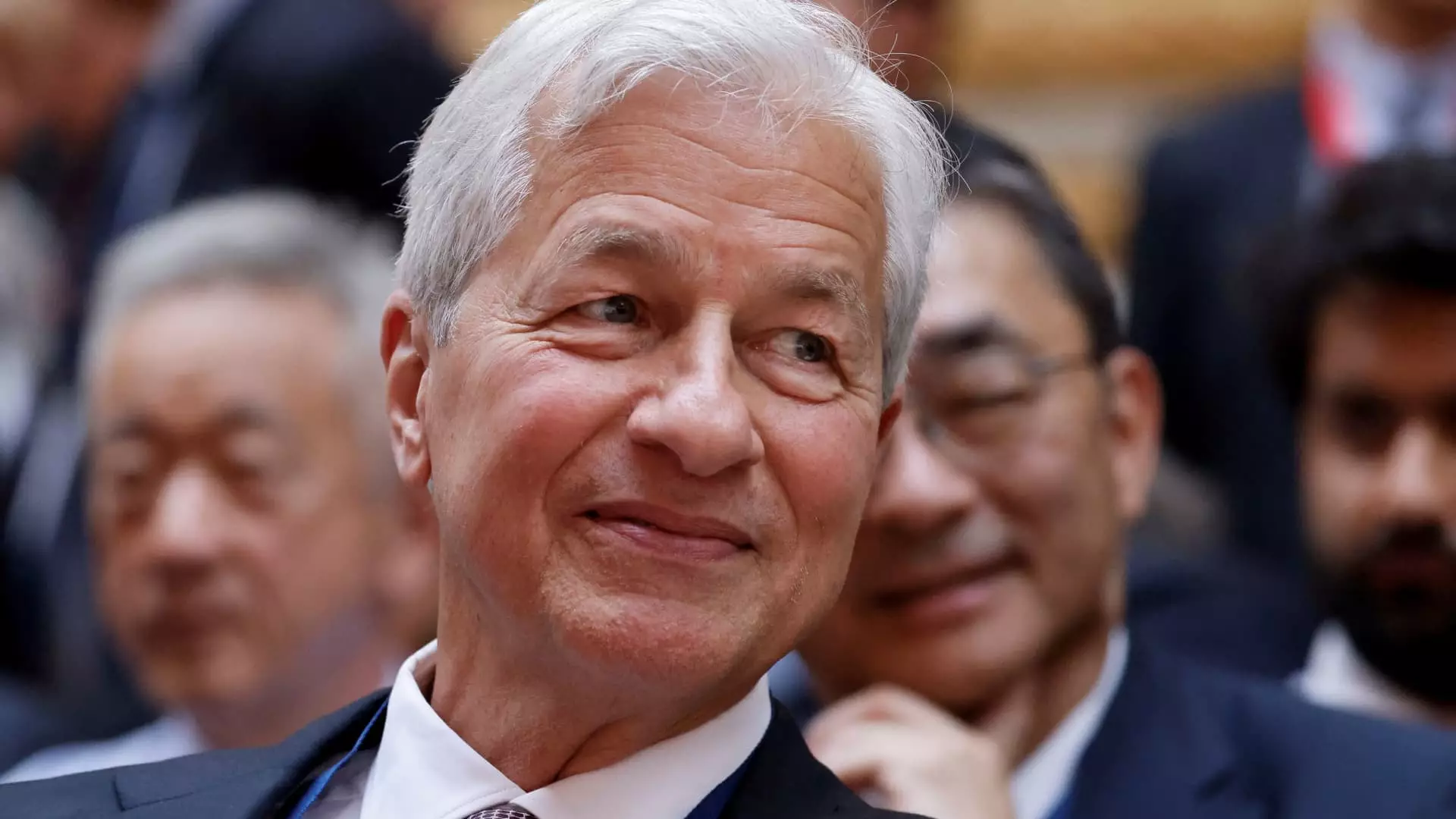In the wake of a record-setting year in profitability, JPMorgan Chase executives are tethered in a nuanced predicament characterized by an overabundance of capital; particularly, an astounding $35 billion deemed as excess cash. This “high-class problem,” as articulated by CFO Jeremy Barnum, stems from rigorous financial discipline the bank adopted, evolving from regulations such as Basel 3 that aimed to reinforce firms against financial instability. However, with regulatory scrutiny seemingly easing under forthcoming presidential administrations, the window for deploying this surplus seems to shift, compelling the bank to deliberate on its next steps.
The pretext for this financial strategy was prudent—safeguarding against potential uncertainties in the economy. Yet, as reports suggest a gentler stance on regulations may be in play, the bank is pressured by stakeholders to clarify its strategy amid rising concerns that the cash hoard may be left untapped longer than necessary. These situations render the discussion on shareholder value critical, especially as investors routinely inquire how the bank plans on reallocating this hefty cash reserve.
The executives at JPMorgan have been the center of scrutiny, particularly concerning the potential for stock buybacks. Investors have consistently brought this topic to the forefront, echoing sentiments for quicker capital returns. Barnum’s comments highlighted a pragmatic approach: absent viable organic growth opportunities for deploying capital, share buybacks remain a likely course of action. The economics of this decision, however, are complex; it is not merely about returning value to shareholders but also about the timing of such returns based on the bank’s stock performance.
Previously, CEO Jamie Dimon voiced hesitations regarding substantial buybacks when the stock was trading near its 52-week high, pointing out that purchasing shares at inflated valuations could be financially imprudent. His perspective served as a reminder of the inherent risks tied to financial miscalculations, marking a philosophy aimed at long-term sustainability over short-term gains. Despite that perspective, the stock has continued to appreciate, shedding light on a delicate balancing act of fiscal prudence and market optimism.
Dimon’s observations regarding the state of the economy have not gone unnoticed. Since 2022, he has consistently cautioned that a potential recession looms, a warning that grows in urgency as the economy demonstrates ambiguous signals. While markets rally and asset prices surge, there remains an undercurrent of instability, which Barnum remarks necessitates a preparedness for various scenarios. This evaluation underscores a more strategic lens through which JPMorgan must approach their excess cash—an opportunity to bolster market share in any downturn, which history suggests is not uncommon in cyclical economies.
Observing analyst insights, as articulated by Charles Peabody from Portales Partners, the approach to excess liquidity is critical. He emphasizes that effective capital deployment often yields the richest rewards when competitors are constrained by economic hardships. Thus, holding onto this sizeable cash reserve not only allows for enhanced maneuverability during turbulent times but also positions JPMorgan as an agile player ready to seize opportunities as they arise.
In light of these developments, JPMorgan Chase finds itself at a crossroads, balancing the allure of immediate shareholder returns against prudent risk management practices that safeguard its future. The cautious commentary from executives indicates an acute awareness of valuation and market perceptions while simultaneously outlining strategic foresight into the unfolding economic landscape. Nestled amid regulatory changes and fluctuating market sentiments, the bank’s approach to its excess capital highlights a commitment to sound financial governance.
As it stands, JPMorgan’s narrative encapsulates much more than just numbers; it reflects a journey of corporate responsibility, economic anticipation, and the perpetual quest for equilibrium between growth and caution. The financial giant’s ability to navigate this complexity will be decisive, not only for its stakeholders but also for its longevity in an increasingly volatile economic climate.


Leave a Reply